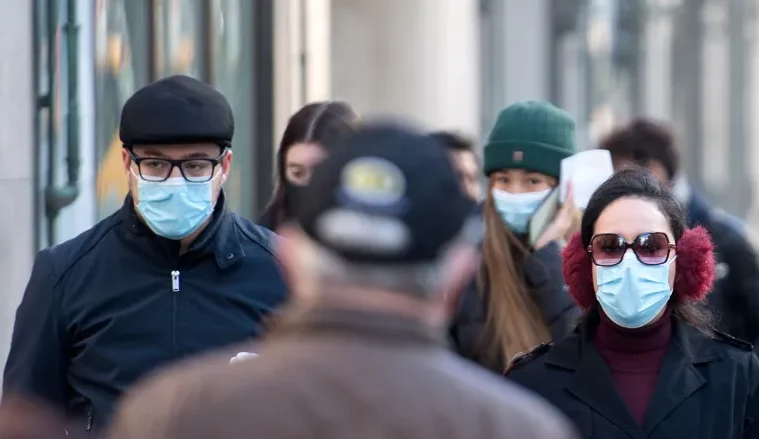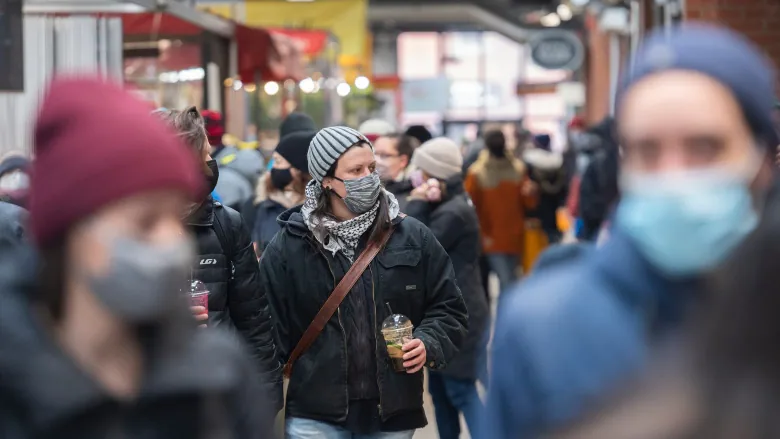Don’t put your mask away just yet. Public health experts say we will still need them due to a new rising wave of COVID-19.
This new wave can be called either the resurgence of the Omicron or the sixth wave. According to Dr. Peter Juni, Director of the Ontario COVID-19 Science Table, said “Ontario is definitely again in a phase where case numbers are going up “actually quite steeply,”
[embedyt] https://www.youtube.com/watch?v=tAEhXSxsa_8[/embedyt]
via CTV News
A sub-variant of the Omicron called BA.2 has not been diagnosed in most of Canada to date. However, the Omicron ‘stealth’ covid or BA.2 has already been detected in Quebec and makes up over 65% of their cases says the province. Some parts of the United States are also dealing with the BA.2 variant after test results were determined through wastewater. Wastewater readings indicate the number of daily infections.
Since the restrictions were eased across Canada over the past few months due to decreases in cases, most people continue to wear their masks as a precaution. Even though the country has a record high rate in vaccination numbers.
The mask mandate and the rest of the pandemic restrictions ended in the last week of February coming into March 1 across the country. Except for Quebec, which had planned to ease its restrictions next month. However, due to Quebec’s surge in patient cases, it’s likely some of the restrictions will be re-imposed, despite upcoming elections.
As a result, experts say because of the ease of restrictions in March 2022, a new wave is here. And the largest populated provinces especially, are in the middle of it.
So what does this mean for individuals who have already received two or more vaccination shots over the last two years?
While some have opted for the third shot, others have declined it, fearing too many virus shots within a 24 month period of time. The 4th dose or a 2nd booster shot is optional but not a requirement right now.
Medical experts are seeing more patients come into the emergency room due to this recent surge in March. And this means that doctors, nurses, and hospital workers themselves face more exposure.
Canada is made up of 10 provinces and 3 territories. Consequently, across the country, the highest number of infections are showing up in the largest-populated provinces of British Columbia, Alberta, Ontario, and Quebec. Most Canadians have received their first COVID-19 vaccinations shot. The numbers for booster shots are significantly lower according to health experts.
For example, during March the lifting of vaccination passports and mask mandates were prevalent in Ontario. That said, for the re-opening of restaurants and fitness gyms etc, the relaxed mask mandates for the public may now be pulled back.
Both the provinces of Ontario and Quebec have elections coming up this year. Ontario’s General Election will take place on June 2nd. While Quebec’s election will take place in October. The majority of Canadians supported the restrictions early on. Politicians are probably less likely to re-instate strict pandemic health measures because of their upcoming elections. Although, the Premiers have adamantly denied this is a factor.
The majority of Canadians supported the restrictions earlier in the pandemic. Since then, that number has significantly dwindled.

People showed their dismay by staging protests along the US/Canada border and across the country in early 2022. Prime Minister Justin Trudeau invoked the emergency act for the first time in history, to curb the protestors.
[embedyt] https://www.youtube.com/watch?v=4s-hDrmuF8k[/embedyt]
via CBC News
In the province of Alberta, Premier Jason Kenny is also facing election core issues including mask wearing, in his coming election in 2023. And while Kenny denies that making a return to mask mandate is currently not on the table, it could easily turn as the election grows closer. And this is a concern for voters as they head to the polls in all three provinces.
Wearing a mask is still required across Canada in public indoor settings such as public transit.
Published by Holr Magazine



